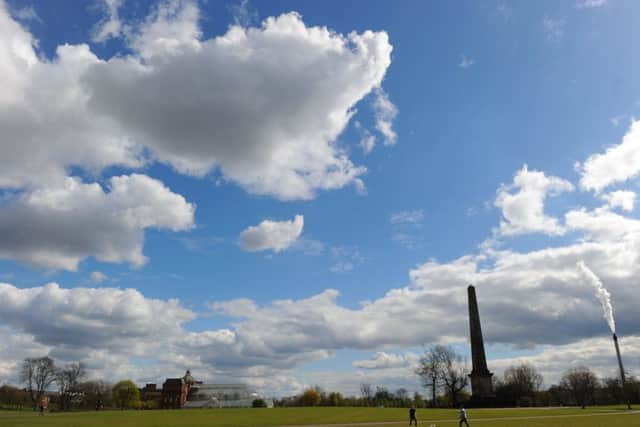When a coal mine was planned for Glasgow Green


Since the 15th Century, Glasgow Green has been used for everything from cattle grazing to political rallies and the washing and bleaching of clothes. Thousands would be attracted there every year by the fun of the Glasgow Fair.
But during the mid to late 1800s, the park faced a new purpose as city leaders considered building a coal mine to generate much-needed revenue.
Advertisement
Hide AdAdvertisement
Hide AdCoal was discovered under Glasgow Green in 1821 with nine seams of “very valuable quality coal” eventually identified in its upper section.


By 1858, placing a shaft in the park was an enticing prospect for a council struggling to balance the books after a spell of large-scale spending on municipal projects including the building of Kelvingrove Park, the McLellan Galleries and supply of water to the city from Loch Katrine.
As a result, the mineral rights to Glasgow Green were to be sold to a local industrialist, John McDowell, with coal found on 30 acres of the park - around a quarter of its land mass.
It was claimed that around £3,000 could be raised annually for 30 years if the coal was extracted - but public protest erupted against the plans .


Advertisement
Hide AdAdvertisement
Hide AdThe row was fought largely along class lines with radical councillor James Moir, who represented Gallowgate, claiming the working classes of the East End would lose their open space to pay for Kelvingrove Park for the benefit of wealthy West End residents.
Others claimed that the coal had to be had - at any cost - given the debt faced by the city.
The Glasgow Sentinel was to champion Councillor Moir’s arguments and insist that the park must remain for the working people.
An editorial of the newspaper in April 1858 said: “The ancient pride of the city...we regret to say is in imminent danger.
Advertisement
Hide AdAdvertisement
Hide Ad“Thanks to the recklessness and the extravagance of the municipal authorities, we are as a corporation fast getting into deep water.”
While the presence of coal under the park had been long been known, it was now “openly and unblushingly proposed to sink a shaft on the green,” the newspaper said.
Its editorial added: “Against the proposal, we, in the name of the inhabitants of the Central and Eastern districts of the city, emphatically protest.
“These sections of the community are mainly inhabited by the industrious classes - the workers in our mills and other public works, parties to whom a mouthful of fresh air and a draught of caller water are inestimable blessings, blessings which but for the green they would seldom have an opportunity of enjoying.”
The Glasgow Herald took the opposing view in its pages.
Advertisement
Hide AdAdvertisement
Hide AdIts editorial from the same week added: “The plain fact is that corporation is short of money and must have it.”
The newspaper said the Green was “not the place it once was” and that the surrounding area was already heavily industrialised.
“Even should an independent shaft be put down in an upper corner of the green the ‘desecration’ would be of comparatively little account,” the editorial said.
It added: “It would be only one chimney added to the hundreds which already fringe the expanse in all directions.
Advertisement
Hide AdAdvertisement
Hide Ad“The very men, of some of them , who inspired the East End opposition, have put down their engine chimneys by the score on the edge of the Green wherever a profit could be made.”
The plans were ultimately blocked in 1858 but the prospect of coal mining at Glasgow Green remained attractive. The plans emerged once again in 1869 and again in 1888.
Even in 1912, councillors were arguing that part of Glasgow Green must be mined with claims that £1m could be raised by the venture.